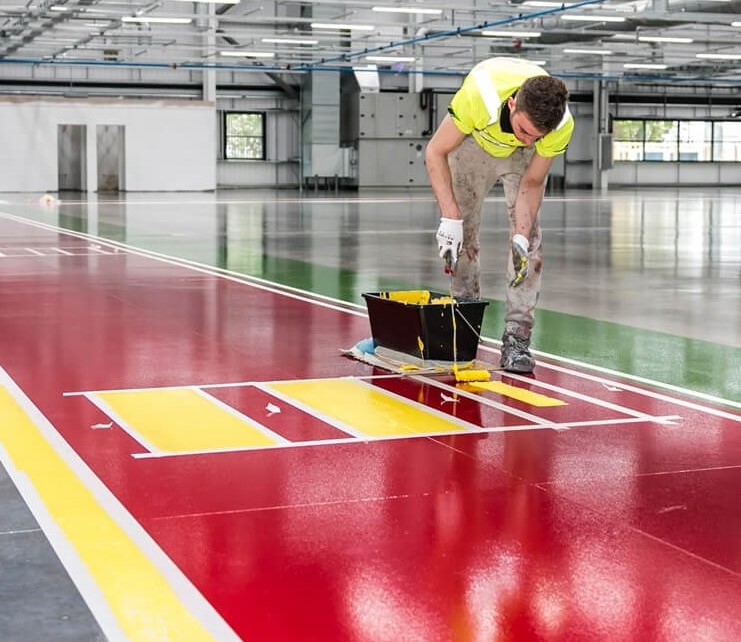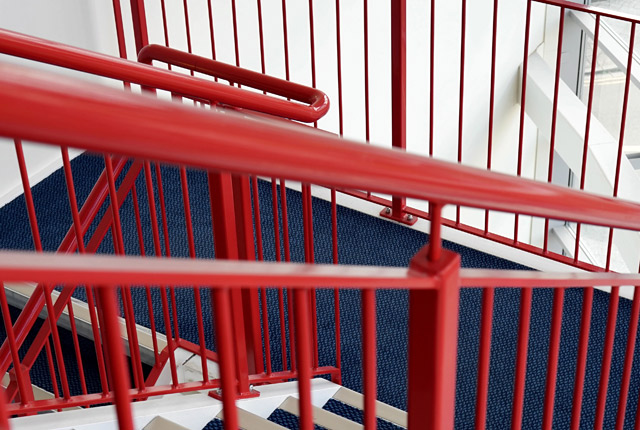
Polyurethane (PU) coatings are originally defined as products made from polyisocyanates and polyols, but....
one can also define them more broadly and include all the systems based on a polyisocyanate whether the reaction is with a polyol, polyamine or water. This means that a PU paint may contain urethane, urea, allophanate and biuret linkages.
Polyurethane coatings have grown rapidly since they were first introduced years ago because of their:
- Highly versatile chemistry
- Superior properties such as toughness, resistance to abrasion and chemicals
- Hardness with flexibility
- Adhesion capability to all sorts of substrates
- Resistant to UV light
- Great resistance to cracking
- Can be easily cleaned due to their seamless structure
Chemistry of polyurethane coatings
The chemistry of the isocyanate group provides the fundamental basis of polyurethane coatings chemistry. Its high chemical reactivity, coupled with its ability to react with many different chemical partners, makes the isocyanate group particularly suited for the coatings market. The isocyanate group can react with any compound having a reactive hydrogen; for example, an alcohol, an amine, and even water.
Reactive and non-reactive PU systems
The broad categories of PU technology used in the paint industry are classified as reactive and non-reactive. Polyurethane coatings are available either as:
Two-component systems consist of a polyisocyanate and a polyol or polyamine that are mixed just prior to application and curing by direct cross-linking at room temperature.
One-component systems that cure when exposed as a film to moisture, oxygen or heat.
The reactive polyurethane paints are generally crosslinked due to branched polyols and/or isocyanates or through the formation of allophanate and biuret. Crosslinking, whilst increasing hardness and abrasion resistance, improves the resistance to water, solvents, weathering and temperature. However, they lead to poorer flexibility if too high a level is being used.
Technology of reactive coatings
Reactive polyurethane paint systems consist of several categories further described herewith:
- Two-component Polyurethane Systems
- One-component Polyurethane Systems
- Oven-curing or Stoving PU Systems
- Powder Coatings
Two-component polyurethane systems
The two-component family of PU coatings was the first developed and is characterized by a pot-life. These systems are also known as two or twin pack and are still the most important products. The primary reaction is between isocyanate with polyols. Indeed, once the isocyanate and polyol are mixed, they start to react, which leads to an increase in viscosity and later to gelation.
A significant feature of this family of reactive PU coatings is that curing happens at low temperatures, producing coatings with excellent properties.
Low-temperature curing offers cost and processing benefits, and also the possibility for applying coats on heat-sensitive materials such as plastics, and very large items that cannot be heated such as, flooring and public transportation.
Other key advantage of the two-component coating is the theoretically infinite storage stability coupled with rapid curing reaction once the two resins are mixed.
Solvent-based systems
They are quite frequently utilized in automotive and aviation for refinishing, where polyurethane has replaced traditional nitrocellulose and acrylic lacquers. PUs can accept high solids loading and have better properties. Besides vehicle finishing applications, two component solvent-borne systems are used also in topcoats for aero planes. Aliphatic isocyanates are mixed with polyester polyols or blends of polyester with acrylic grades.
Water-based systems
The push for low VOC coatings led to the successful launch of water-borne PU coatings, which are today matching closely solvent-borne systems both in terms of performance and overall appearance. These water-based recipes are now commonly used in:
- Transportation
- Machinery
- Furniture, and
- Protective metal coating applications
Whilst their high flexibility also makes them applicable to polymeric and wooden substrates.
These two-component paints contain dispersible isocyanates and polyols, such as polyacrylates or polyesters that are emulsifiable or soluble in water. The principal isocyanate is an HDI trimer but IPDI trimers are also being used as is allophanate modified HDI.
- Aromatic grades are avoided because they react too vividly with water.
- The hydrophobic isocyanate grades can be used as such or can be emulsified by partial reaction with a hydrophilic polyol.
Most water-based paint formulations still need up to 10% solvent to make the polymer form a homogeneous film. The coat is cured at temperatures ranging from 20°C to 80°C. To ensure adequate polymer network formation, an excess of isocyanate is added to compensate for the isocyanate consumed during the urea reaction. Formulations are presently available containing no solvent at all, and they are predominantly used in the building sector, where they are applied as sealants or coats for roofing and flooring of car parks and to protect against corrosion.
Most of these systems are based on:
- MDI and polyether or oil-modified polyester polyols
- Chain extenders, and
- Catalysts
There are a very high variety of recipes, with pot life ranging from a few minutes to more than an hour, and applicable at temperatures as low as 5°C. Highly filled two-component systems are used as synthetic mortars for concrete repair and as foundation material for heavy equipment.
One-component polyurethane paints
One-component moisture-cure PUs are widely used for maintenance and repair, capitalizing on their easy application and superior mechanical behavior. They are good candidates for painting steel constructions such as bridges, cranes and primers, or sealers for concrete, and in synthetic mortar. These coatings are prepolymers which are liquid at room temperature, and are obtained by reacting MDI, HDI or TDI with polyether or polyester polyols that are linear branched with an isocyanate content below 20%.
Oven-curing PU systems
Stoving-curing paints are obtained by blending a blocked isocyanate with a polyol to form a pseudo-one-component mix that is stable at ambient temperature. When heated to its activation temperature (100-200°C), the isocyanate unblocks and reacts with the polyol thereby forming the coat.
Isocyanates - may be aromatic or aliphatic - all contain one active hydrogen and contain a blocking agent most of the time caprolactam. Another method of blocking is to form uretidinedione or dimer links. As these coatings are all baked at relatively high temperatures, their use is restricted to applications withstanding heating/cooling cycles. In practice, their main use is for coating metals.

Powder coatings
The application of PU powder coatings is relatively small. Due to its lack of need for a solvent and good coating properties, this system generates great interest. These coatings offer:
- Durability
- Abrasion resistance
- Low-temperature flexibility
- Good aesthetics like all other PU coatings
They are used in decorative metal coatings for use in automotive, furniture, home appliances, etc. The powder coating is prepared at temperatures below 100°C, electrosprayed or fluidized bed coating onto substrate thereafter, it has be baked at temperatures below 200°C.
The common requirement for PU powder coatings is that all the components must be solid at room temperature. To prevent the PU reaction at any preliminary step, it is important to protect or block isocyanate groups from reacting until they are made available at the oven temperature.

Technology of non-reactive coatings
Non-reactive PU systems have in common that they all contain fully formed polymers with urethane or urea linkages, but no free isocyanates.
Solvent-based coatings
High molecular weight linear polyurethanes are formed or dissolved in solvents. These PUs are obtained through reacting aromatic or aliphatic isocyanates (mainly MDI and IPDI) with polyester or polyether polyols, and chain extenders.
The coatings are brushed or sprayed, and their film is formed by evaporating the solvent. These films are reportedly extremely flexible and elastic on top of being remarkably resistant to mild solvents. Their major outlets are for top coating of flexible substrates such as:
- Leather
- Fabrics
- Shoe soles
- Integral skin foam
Polyurethane dispersions
This family of products grows in significance year after year. PUDs are fully reacted polyurethane systems in the form of small discrete particles of a maximum one-tenth of a micrometer. These particles are dispersed in water to provide a material, both chemically and colloidally stable.
Radiation-curing PUs
This family consists mainly of urethane acrylate coatings that are one-component, low viscosity and hundred percent solids products. They normally are easy to apply and can be rapidly cured by ultraviolet or electron beam energy sources at room temperature.
- Aromatic grades are used in wood, paper, plastic and ink coats.
- Aliphatic systems are utilized where non-yellowing is a must, which is the case among others for PVC floor tiles and continuous flooring.

To sum up, it can be stated that there are a wide range of polyurethane resin grades for coatings available in the market today; they can be chosen based on condition and application. For more information feel free to contact our experts.





